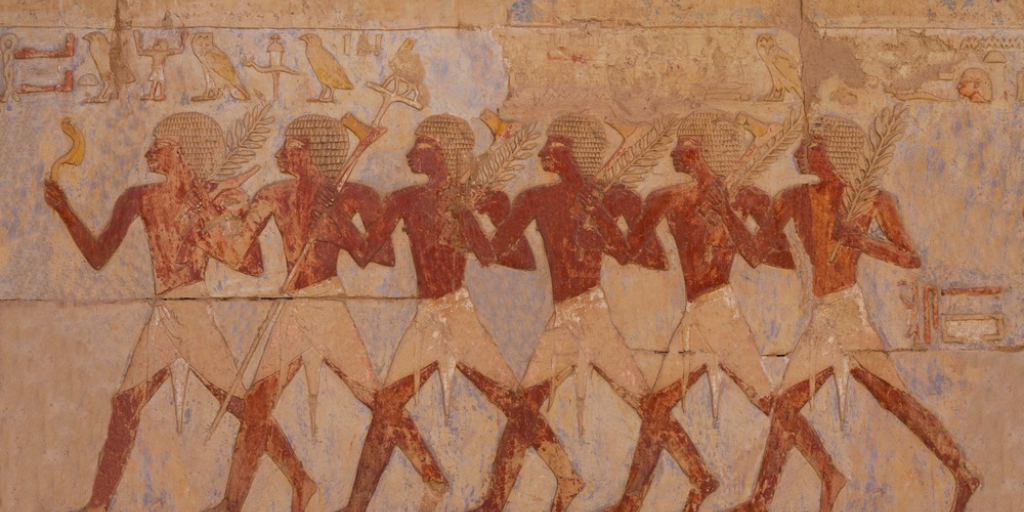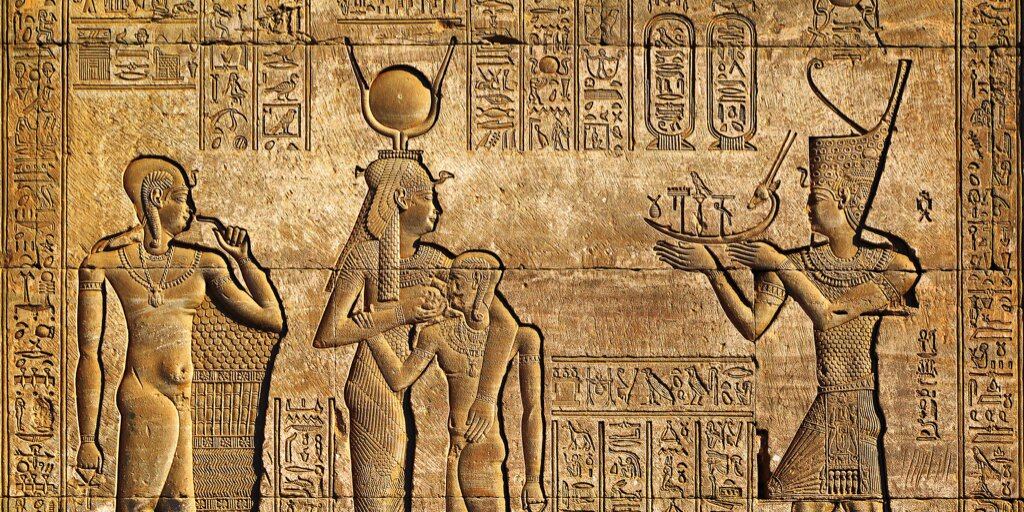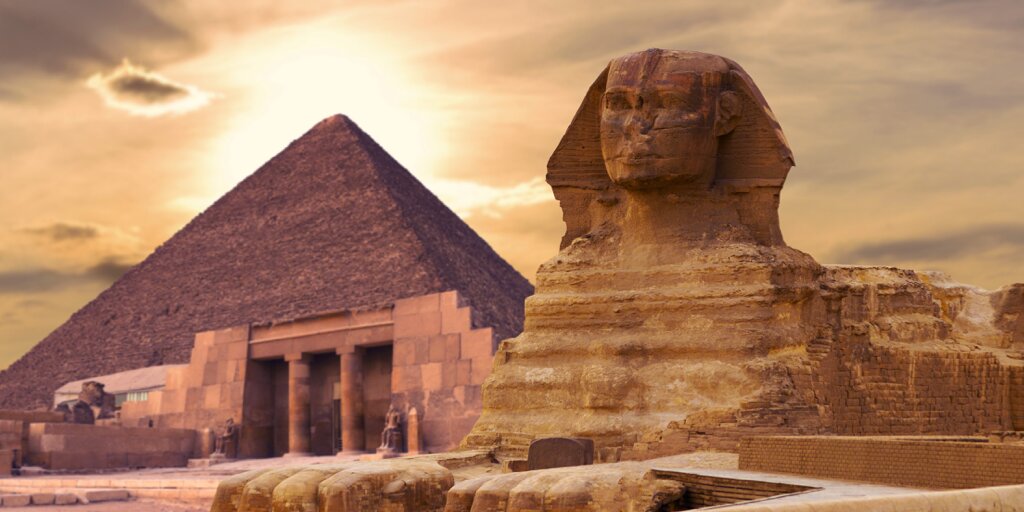Spanning over 3,000 years, ancient Egyptian civilisation stretched from the north of what is known today as Syria, to the south of modern-day Sudan in its heyday.
The civilisation started off as city states — divided into two regions — that ran along the Nile river in North Africa. Spread out along the banks of the Nile from south to north, upper Egypt was named as such for being located upstream of the river, and lower Egypt in the north was located downstream.
It was around 3100 B.C that both regions merged thus creating one state which would go on to prosper for a millennia. It would then be divided into three main periods: the old, middle and new kingdoms — with two periods in between the three eras known as the first and second intermediate periods, which were beset by instability.
Ancient Egyptians have been hailed for their achievements, most notably the pyramids. To this day, the pyramids’ mode of construction incites debate because it was considered ahead of its time.
But what constitutes the lifestyle of an individual living in ancient Egypt? What types of jobs did they hold, if any? Was divorce allowed? How did they pass the time when they were not working?
Love and Marriage
Marriage and family were considered important for ancient Egyptians with both arranged – more so among the elite – and non-arranged marriages being part of the culture. Girls and boys would come of age for marriage under the age of 15. While divorce was allowed, it is not clear how common it was.
Within marital laws women were on a similar standing to men to a great degree. There is evidence implying that marriages during that period were initiated by women as well as men. Moreover, women were granted the right to divorce their spouses.
Relics alluding to the romantic nature of individuals during that time bear witness to the value of love in ancient Egypt — whether that romance is strictly within the confines of marriage or not is unclear.

The surviving relics are a series of poems and songs found during an excavation in a tomb builders’ village near the Valley of the Kings, which houses the tombs of several pharaohs. These provide a glimpse into the style of composition used at the time as metaphors, repetitions, and a number of poetic devices can be seen in the texts composed presumably during the New Kingdom, which extended from 1539 to 1075 B.C.
Within the context of the family structure, women could own property which would be passed down through the woman’s familial line.
In terms of a child’s lineage, it was discerned through the mother and her side of the family rather than that of the man’s.
In ancient Egyptian civilisation, like many ancient civilisations including the Incas, marriage among siblings was permitted. However, the practice was reserved for royal families in ancient Egypt, with the justification being that it was a practice done mainly to maintain the blood line’s purity.
The Working Day
Naturally, job hunting did not exist during ancient times. Rather, crafts were passed down from father to son with the latter joining the workforce as early as 12 years of age. Rather than going to school, children were taught a trade or took part in an apprenticeship.
The popular jobs at the time were bakers, scribes, doctors, merchants, priests, craftspeople, and farmers. During the early dynastic period (3100-2686 BC), the most widespread profession was farming, with the population spread out over small villages.
Agriculture was thriving at the time; ancient Egyptians took advantage of the annual river flooding — which led to irrigation for farming — and would sow their wheat and harvest it once the water receded, before the commencement of drought season.
During the Middle Kingdom in particular, trade trips and mining missions were widespread. It was also a period that saw advancements in agriculture with a large number of agricultural endeavors taking place in Fayoum.

Individuals in ancient Egypt were believed to start their day at dawn, and not with the rising of the sun, according to a number of scholars. The days were made up of 24 hours. Ancient Egyptians told time with the use of sundials, shadow clocks and water clocks during the new kingdom. However, no evidence was found to indicate whether or not they kept count of minutes and seconds.
A month was made up of three ten-day weeks. During the old kingdom, a civil calendar was introduced with 30-day months. Comprising12 months, the year consisted of three main seasons: Inundation (Akhet), Emergence (Peret), and Harvest (Shemu).
The inundation season — made up of four months — began when the Nile flooded, the emergence season witnessed the receding of the Nile, followed by the harvest season where farmers reaped what they sowed.
Work Hard, Play Hard
Ancient Egyptians partook in a slew of leisurely activities. One of those was music. The harp or the lyre — a u-shaped stringed instrument which ancient Greeks also had an affinity for — was the instrument of choice.
Along with their love of music, Egyptians at the time played board games, the most popular of which was Senet – queen Nefertari is believed to have enjoyed a round or two, as well as her husband Ramses II.
For the wealthy, a game box made of tomb tiles and fragments was used whereas those of lower socio-economic classes scratched grids on the floor to use for the game. The game pieces came in the form of cones and spools with about 30 squares making up the playing space.

The game, which was usually played with two players, saw the pieces start at square one in a bid to make it to square 30 through a set of moves which could include blocking an opponent’s piece or pushing them to retreat.
Another board game that was popular during that period was Twenty Squares which used as its game pieces cones, spools and animal knucklebones — commonly used as dice in ancient times for games.
Outdoor activities like boating trips, fishing, swimming and hunting crocodiles and hippopotamuses were part of the recreational activities ancient Egyptians took part in. However, the elite were more likely to throw opulent parties as a source of entertainment.
While ancient Egyptians’ lifestyle seems starkly opposed to today’s society, much of their day-to-day life echoes modern Egyptian life, albeit under a different context. Falling in love, and sometimes out of it, and enjoying the mundanities of a lazy day fishing by the Nile or splashing about in the water were some of the everyday activities ancient Egyptians participated in — not unlike their descendants today.







Comments (2)
[…] From Love to Work and Play: Daily Life in Ancient Egypt […]
[…] Source link […]